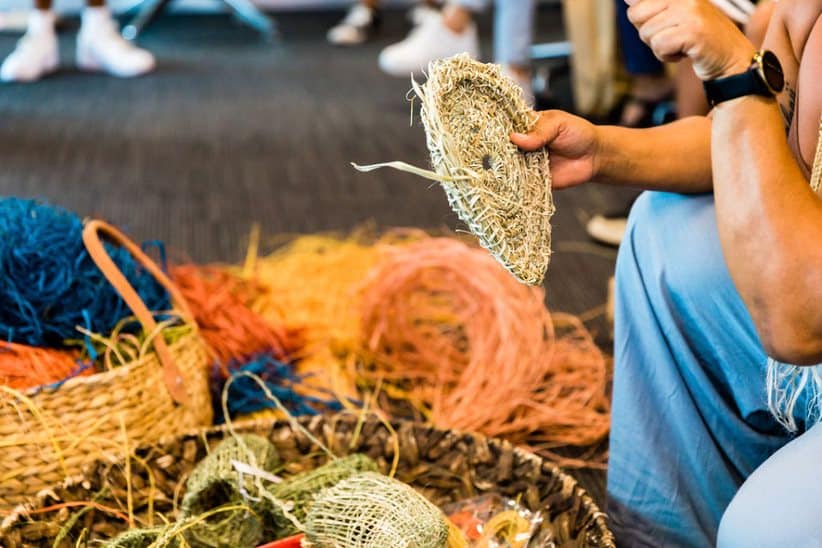Making sure you’re paid and treated fairly: Part two
Eden Fiske
- Career & Business, Money Lessons

In my previous article, we began by unpacking some of the key issues for Aboriginal artists seeking to build a sustainable and financially beneficial career. We looked briefly at the history of Aboriginal art in the public sphere and some of the systematic issues that have come about as part of its massively lucrative and ever-expanding nature. We also began looking into the way Mob are represented and also how the commission process functions. Noting that there is a massive importance to check in with yourself and make sure that you have a set of principles to stick by so as to not fall victim to unfair treatment.
These are all essential aspects of laying a solid foundation for emerging, mid and established artists, and are always evolving alongside the growth of First Nations art and culture. In continuing this discussion it is essential to look at how Mob can further protect ourselves from systematic problems and unethical treatment.
Know your boundaries and values
One of the most important parts of safeguarding yourself is to make sure that you have a solid idea of your boundaries and values. This can be something that you write down and refer to, or if you’re more of a verbal person it could be an affirmation that you tell yourself or remind yourself of mentally. No matter what, this is a very important step and will serve you greatly when communicating with clients or people who seek your services as an artist. It’s a great way to make sure you don’t end up allowing your work to be used for reasons you wouldn’t want. Sadly, I had to find this out the hard way in my own personal career, but potentially wouldn’t have if I’d created a set of boundaries earlier.
An example of this could be having a short affirmation or question that you ask yourself prior to agreeing to a job, such as…
- What is the client’s motivation?
- Does this provide opportunities for me to grow my career or creativity?
- Am I being compensated fairly? What is the client getting out of this, and am I getting a fair share?
- Will this client own the rights to my work? And so on.
These questions are important to keep in mind, as they will help you move in a valued direction.
Setting up ground rules
It can also be a great idea for some artists to put their conditions into writing and have a contracted they have drafted which outlines each particular point. This way the client understands your ground rules and will have no trouble following them when exhibiting or using your creative works.
Too many times I’ve been on the end of a creative job, where I’ve put in time, resources, money and hard work only to have a client take what I’ve given them in terms of an idea or pitch with no compensation and leave a project unfinished. Sadly this is true for a lot of Mob, and it’s something that we can combat by practicing our own boundaries that uplift our creative practice.
In future articles, we will take a look at copyright and how this factors into the purchase and reproduction of Aboriginal Art.
Like every article on TomorrowMoney, this is not personal financial advice. If you are in debt and need free counselling, you can contact the National Debt Helpline on 1800 007 007.
Let us know if you liked this article
Let us know if you liked this article




